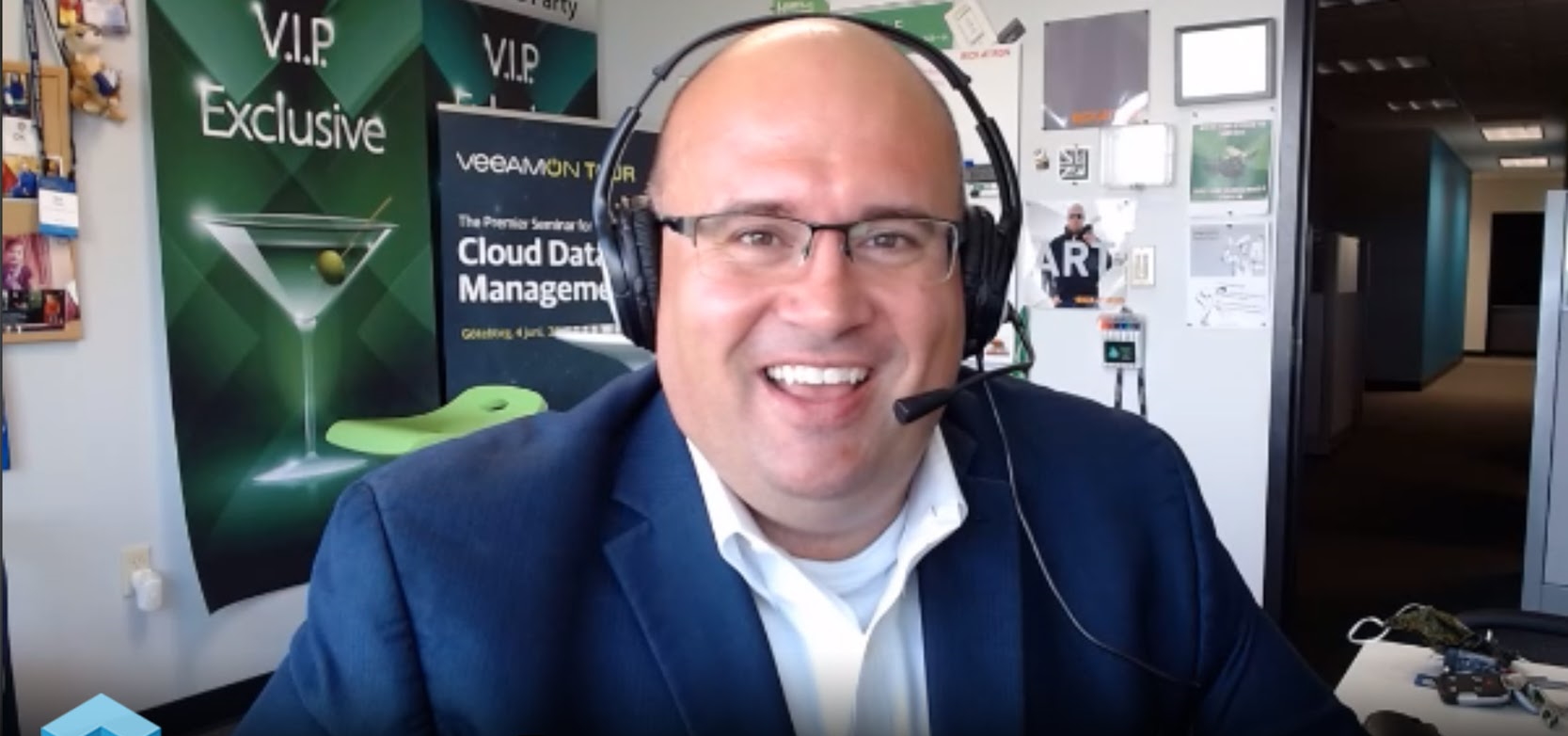 SECURITY
SECURITY
 SECURITY
SECURITY
 SECURITY
SECURITY
Ransomware attacks are never far from the headlines, and their impact can be disastrous. As the COVID-19 pandemic shifted corporate operations and workforce to remote models, the risk became even greater — as well as the need for adequate protection — according to Rick Vanover (pictured), senior director of product strategy at Veeam Software Corp.
“I have one data point that indicated [that] around 58 or so percent of ransomware comes in through remote desktop,” Vanover said. “What really worries me is when people hustle, when people hurry [to adapt]. I worry about incomplete security models, people hurrying to implement.”
To help businesses tackle ransomware, data protection giant Veeam bets on what it calls ultra-resilient backup storage. This requires companies to adopt one or more copies of data on the following media: tape backups, immutable backups in S3 or S3-compatible object storage, air-gapped and offline media (such as removable drives and rotating drives), and backups in Veeam Cloud Connect with Insider Protection.
Vanover spoke with Dave Vellante, host of theCUBE, SiliconANGLE Media’s livestreaming studio, during the VeeamOn event. They discussed how to ensure data backup security, the threats that the pandemic brought to data, Veeam’s shared responsibility model for Office 365, and how the company organized its online event amid the COVID-19 lockdown. (* Disclosure below.)
The best business strategy against ransomware attacks involves three main parts, according to Vanover. The first is the education of enterprise employees on the subject. “We have to know what threats are out there; we have to know who is accessing what data,” he said.
After that comes a large part of the strategy, which is the implementation of solutions. “How have we implemented Veeam? Are we keeping data in immutable buckets in the cloud? Are we keeping data with an air gap?” he asked.
The third part is the remediation, which means having a plan to solve problems in case something happens.
To implement backup solutions, Veeam connects to several other systems and works with a shared responsibility model. For Office 365, for example, Microsoft is responsible for hosting and protecting the infrastructure while Veeam helps organizations with security at the data level.
“Microsoft, as well as the other clouds, makes it very clear that data classification and that responsibility of data … sit 100% with the customer,” Vanover explained. “Having the control plane open, that data is very important. So we really base it on the shared responsibility, and Microsoft is one of our strongest partners.”
Following the cloud trend in the enterprise, Veeam has launched cloud-native backup products, such as those for Amazon Web Services and Microsoft Azure. These products, as well as the Veeam Backup for Office 365 and the Suite v10 — a solution for data management and protection for hybrid-cloud environments — are the main fuel for the company’s growth, according to its Q1 earnings report.
“Some organizations like this cloud or that cloud, or a little bit of these two clouds combined,” Vanover pointed out. “So, we have to really go into the cloud with customer needs in mind, because there’s no one-size-fits-all approach to the cloud. But data, everybody knows how important that is.”
To offer appropriate solutions to each costumer, Veeam relies on a cost-transparency policy. The company is making cost estimators available to allow businesses to choose the level of data protection they want, as opposed to “under protection” or “overprotection and overspending” models, according to Vanover.
“I don’t want backup to be a cost-prohibitive insurance policy, basically,” he said. “I want backup to be a cost-effective yet resilient technology that when we’re using the cloud, we can kind of balance all these needs.”
Watch the complete video interview below, and be sure to check out more of SiliconANGLE’s and theCUBE’s coverage of the VeeamOn event. (* Disclosure: TheCUBE is a paid media partner for VeeamOn. Neither Veeam Software Corp., the sponsor for theCUBE’s event coverage, nor other sponsors have editorial control over content on theCUBE or SiliconANGLE.)
Support our mission to keep content open and free by engaging with theCUBE community. Join theCUBE’s Alumni Trust Network, where technology leaders connect, share intelligence and create opportunities.
Founded by tech visionaries John Furrier and Dave Vellante, SiliconANGLE Media has built a dynamic ecosystem of industry-leading digital media brands that reach 15+ million elite tech professionals. Our new proprietary theCUBE AI Video Cloud is breaking ground in audience interaction, leveraging theCUBEai.com neural network to help technology companies make data-driven decisions and stay at the forefront of industry conversations.